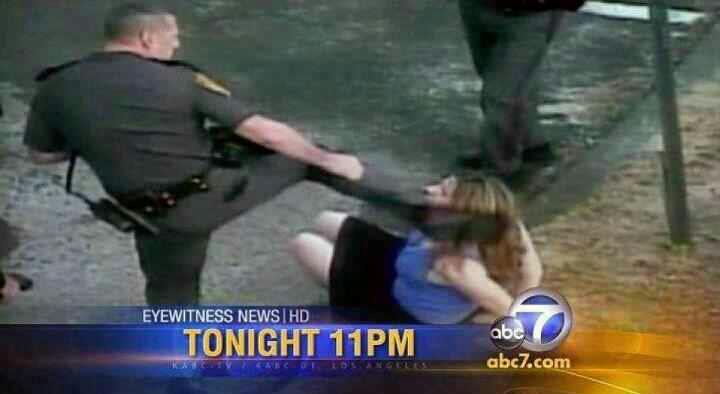Green
Bay police said Tuesday they are investigating an arrest outside a downtown bar
over the weekend captured on video and posted online.
The
video, posted to Facebook and YouTube, shows an exchange between a man outside
a bar and Green Bay Police Officer Derek Wicklund. The profanity-laced video
appears to show an officer aggressively subduing an individual outside the
tavern.
All
officers involved in the incident remain on the job and continue to work on
patrol.
The
department’s Professional Standards Division is initiating an investigation and
is seeking the public’s cooperation, police said Tuesday.
“We
haven’t had, per se, a formal complaint filed, but based on the information we
received (Monday) we have decided to start our own investigation,” Capt. Bill
Galvin of the Green Bay Police Department said during a press conference
Tuesday morning. “We’re going to be looking at everything that took place
before, during, and after that incident.”
Joshua
Wenzel, 29, of Caledonia, said he is the man on the video being grabbed by an
officer, pushed against a car and taken to the ground. Wenzel said he and other
people had been drinking at Stir-Ups Parlor & Saloon on South Washington
Street, and were outside the bar shortly after it closed.
“I’m
standing in front of this other kid, who is saying things and he is walking
toward a cop,” Wenzel told Press-Gazette Media. “I don’t know the kid. I say,
‘you don’t want to go after a cop.’ Then the cop starts arresting him, and I
say ‘what are you arresting him for?’”
On
the video, a voice says “why is he getting arrested too now? Why is he getting
arrested too?” An officer walks toward Wenzel, grabs him and pushes him against
a parked car. The pair then fall to the ground and scuffle.
“He
pushes me back ... he punched me in the face,” said Wenzel, who has been
ticketed on charges of disorderly conduct and resisting arrest.
Wenzel
said he doesn’t have any bruises or other injuries. He said Tuesday he had not
lodged a complaint with police, and had not decided if he will consult an
attorney.
Wenzel
said he was “kind of drunk” at the time of the incident, but “not stupid,
falling-down drunk.”
The
incident came to light Monday afternoon through a Facebook post.
Galvin
said the early investigation indicates the beginnings of the incident started
around an individual who left one of the bars with an open intoxicant. Police
ticketed a 24-year-old Green Bay man on that charge.
At
least several days of work lie ahead in the investigation, but its duration can
vary depending on information that comes forward, Galvin said.
“What
we look at is, did officers follow policies and procedures?” Galvin said. “If
they didn’t, what happened, and why did it happen. We put that all together
into report form and forward it to the chief.”
He
said officers dealing with a person who is resisting arrest can “go one level
up” to subdue that person. If the person is wrestling with an officer, the
officer could be justified in throwing a punch, striking with his elbow or
using his baton, Galvin said.
“Every
complaint against an officer is investigated as fully as possible,” Galvin
said. “In an incident like this we didn’t wait for someone to come forward and
file a complaint, we felt something like this is something that should be
looked at.
“There
were quite a few comments on Facebook, we were receiving emails from people
that were concerned about the actions that took place,” he said.
“We’re
reviewing details, video from officer’s squad cars, videos submitted to us by
citizens and we’ll be trying to formulate a list of possible witnesses we can
interview,” Galvin said. “We’ll be doing a thorough and transparent
investigation.”
